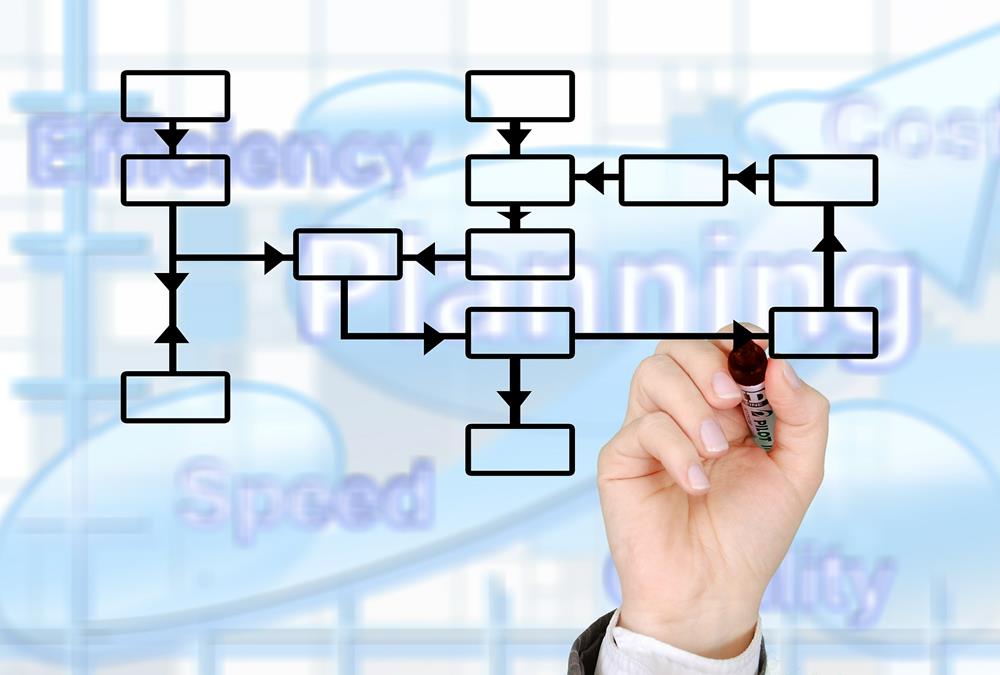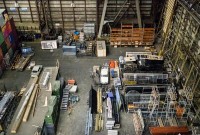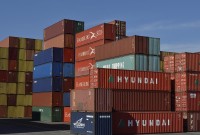- Home
- Business Processes
- Industry Knowledge
- Aerospace Industry
- Automotive Industry
- Banking Domain
- BFSI Industry
- Consumer/ FMCG Industry
- Chemicals Industry
- Engineering & Construction
- Energy Industry
- Education Domain
- Finance Domain
- Hospitality Domain
- Healthcare Industry
- Insurance Domain
- Retail Industry
- Travel and Tourism Domain
- Telecom Industry
- Leadership Skills
- eLearning
- Home
- Business Processes
- Order to Cash
- Overview of Warehouse Processes
Overview of Warehouse Processes
The basic function of a warehouse is to store goods. This means that they receive deliveries from suppliers, do any necessary checking and sorting, store the materials until it is dispatched to customers. Traditionally warehouses were seen as places for the long-term storage of goods. Now organizations want to optimize their customer experience and try to move materials quickly through the supply chain, so the role of warehousing has changed.
The basic function of a warehouse is to store goods. This means that they receive deliveries from suppliers, do any necessary checking and sorting, store the materials until it is dispatched to customers. Traditionally warehouses were seen as places for the long-term storage of goods. Now organizations want to optimize their customer experience and try to move materials quickly through the supply chain, so the role of warehousing has changed.
Given below are the list of activities that are generally included in today's ‘warehousing’
- Receiving goods from suppliers.
- Identifying the goods, matching them to orders and finding their intended use.
- Unloading materials from delivery vehicles.
- Doing checks on quantity and quality.
- Sorting goods as needed.
- Labelling the goods.
- Moving goods to storage area.
- Holding them in stock.
- Moving materials within warehouse.
- Picking materials for orders.
- Packing and packaging.
- Loading delivery vehicles.
- Dispatching the order.
- Inventory control and finance.
This is a generic layman view of the warehouse process. Now we will look at the same process from warehouse management perspective and do a deep dive into all of the warehouse activities understanding their drivers and industry wide used execution model.
Warehouse Management Work Processes
Warehouse management is one facet of supply chain management. The Warehouse management includes a wide range of sub-processes and activities to support the warehouse facility operating at an optimal level, at any time. Warehouse processes need to be integrated with other business processes such as transportation, manufacturing, quality control, purchase, transfer, sales, and returns. Any store, factory, or distribution center employs eight high-level processes for physical inventory:
- Inbound Receiving Process
- Inbound Put-away
- Warehouse Picking Process
- Warehouse Packing Process
- Outbound Shipping Process
- Warehouse Counts Process
- Warehouse Returns Process
- Warehouse Labelling Process
- Warehouse Staffing and Roles
- Miscellaneous Warehouse Processes
- Warehouse Reporting
|
Inbound Receiving Process |
When products arrive at a facility, there need to be a defined process to let them in. The process for accepting inventory when it arrives is called "Receiving". |
|
Inbound Put-away |
After products have been received and passed a quality inspection, they need to be stored so that you can find them when you need them. This process is called put-away. |
|
Warehouse Picking Process |
Order picking is the process of selecting items from a warehouse , to fulfill customer orders. |
|
Warehouse Packing Process |
The packing process allows you to validate and pack products into containers. The packaging is intended to provide protection for the item as it is being handled in the warehouse or when the item is being shipped. |
|
Outbound Shipping Process |
The final step is to send ship loads out of the warehouse once all the work that is associated with those loads has been completed. |
|
Warehouse Counts Process |
Counts are typically done to eliminate mismatches between the system and the actual inventory. |
|
Warehouse Returns Process |
A return is the process of handling the return of products from a customer to the distribution center. |
|
Warehouse Labelling Process |
Labelling is done to streamline warehouse organization and make sure workers can easily identify every section, rack, and carton. |
|
Warehouse Staffing and Roles |
Staffing is concerned with the planning for expected workload and determine the number of resources required to complete each activity. |
|
Miscellaneous Warehouse Processes |
Miscellaneous processes to manage the warehouse operations. |
|
Warehouse Reporting |
Preparation and availability of right kind of operational and inventory reports across the warehouse for effective control of warehouse operations. |
Related Links
You May Also Like
-
When a customer wants a product that has been stored in the warehouse, the same need to be picked off the shelf (or off the floor) and get it ready for shipping. Depending on how big is the warehouse, picking can take a while. (Many distribution centers cover more than 1 million square feet.). Hence, warehouse order picking methods are an important aspect within any warehouse.
-
The Outbound process starts with routing the shipments. The Outbound execution process starts from the point when pick tasks are completed for an outbound shipment and ends at the point where the outbound packages are loaded into trailers. The Warehouse Outbound process includes managing and controlling outgoing materials starting from the download of orders through to the shipping of products from the warehouse.
-
Types of Order Picking Methods in the Warehouse
There are many different types of picking in a warehouse and each one works as a customized solution for each business. Depending on the size of your warehouse and inventory, the manpower you have on hand, and the number of customer orders made each day, there may be certain methods that are more efficient for you than others.
-
Warehouse management and distribution logistics involve the physical warehouse where products are stored, as well as the receipt and movement of goods takes place. Warehouse management aims to control the storage and movement of products and materials within a warehouse. These operations include the receipting of inwards goods, tracking, stacking and stock movement through the warehouse.
-
One of the most important decisions when running a warehouse is its layout. Warehouse layout defines the physical arrangement of storage racks, loading and unloading areas, equipment and other facility areas in the warehouse. A good layout aligned with the business needs could have a significant effect on the efficiency.
-
To stay competitive in today’s tough market, the location of your warehouse is vital. To grow retail business need to offer to customers faster and affordable shipping time, which is dependent on the warehousing location as the location of the warehouse affects the transit time to ship orders to customers.
-
Transport operations are often divided into full load and part load and due to economies of scale, the unit costs are higher for part loads. Our customer needs several part loads delivering, so it can reduce costs by consolidating these into full loads. Then it gets all the part loads delivered to a warehouse near the suppliers, consolidates them into full loads, and pays the lower costs of full-load transport to its operations.
-
Overview of Warehouse Processes
The basic function of a warehouse is to store goods. This means that they receive deliveries from suppliers, do any necessary checking and sorting, store the materials until it is dispatched to customers. Traditionally warehouses were seen as places for the long-term storage of goods. Now organizations want to optimize their customer experience and try to move materials quickly through the supply chain, so the role of warehousing has changed.
-
One of the warehousing best practices that retailers like Walmart, Amazon, and Target have adopted is known as cross-docking. During this process the inbound products are unloaded at a distribution center and then sorted by destination, and eventually reloaded onto outbound trucks. In real parlance, the goods are not at all warehoused but just moved across the dock (hence the name).
-
At a high level, the essential elements in a warehouse are an arrival bay, a storage area, a departure bay, a material handling system and an information management system. As part of the process for enabling a warehouse layout, you must define warehouse zone groups, and zones, location types, and locations.
Explore Our Free Training Articles or
Sign Up to Start With Our eLearning Courses

About Us
Learning
© 2023 TechnoFunc, All Rights Reserved











